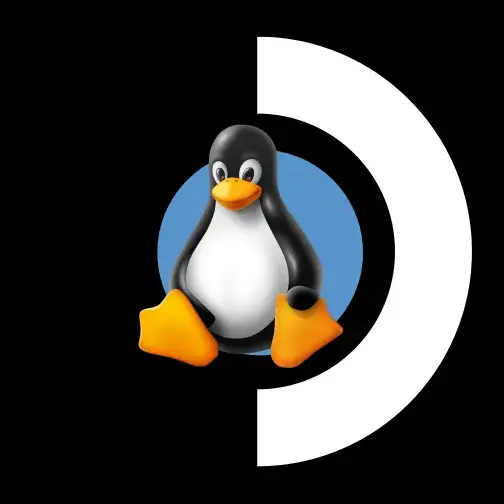

There are no mass produced cases as I know. A couple people have released files to 3D print your own. I tried using a couple different materials, TPU feels the best but does add extra bulk to an already bulky device.


There are no mass produced cases as I know. A couple people have released files to 3D print your own. I tried using a couple different materials, TPU feels the best but does add extra bulk to an already bulky device.


They were in Wisconsin and he was pandering to the locals by wearing a cheese hat and giving away millions of dollars to bribe voters. It didn’t work - the candidate he was supporting lost.


Cognex Barcode Scanner is not open source but it is the best. It’s basically just a demo frontend for a commercial barcode programming library so they are not trying to monetize the app itself. It supports everything! Not just QR code but every kind of barcode. I used to work in logistics and I used it to scan all the different barcodes on shipping labels.
When you scan a barcode you can choose to open, copy, share. Open launches your default web browser. If the barcode isn’t a URL, it all give a search option and you can configure your preferred search engine. It can scan images from your gallery or use your camera. But the important part is it won’t do anything with the scanned data until you tell it to.

Nice! I’m jealous.
Even using Wi-Fi in my house, it constantly drops connections. I was hoping to use it to basically VNC to my desktop but it is so slow and disconnects constantly. There’s some speculation that some of the antennas were not soldered properly or something like that.
Mine also has large black dead spots in the bottom corners of the screen, seems like it was over tightened during manufacturing. Maybe that’s also what broke the antenna!
Mine has been collecting dust. The signal is so bad, even on Wi-Fi, it’s nearly useless. I’d feel guilty selling it. And i paid around $800 USD…
The keyboard’s the star here, and it has all the important keys for terminal use (though it’s a little too wide for my hands, I’d prefer a 4 or 5 inch screen version)
Aside from the keyboard it is like a 2018 era generic Chinese android phone with no support or updates.
Physically I feel the balance of the phone is a bit top heavy, with the curves it’s very slippery to hold onto especially using while lying in bed etc.
Sadly the phone’s mother (fxtec) died in childbirth, so to speak. And the whole “XDA phone” thing was a dud, XDA was a ghost town by the time this thing was in our hands.
Big thanks to the guy keeping lineage working on it!


Despite all that i said, the OLED special editions were very tempting!


I had a fairly opposite experience. I bought a Steam Deck when it first came out and had to return it during the refund period because of a software bug making it basically unusable with my account.
A year later, the bug was finally fixed and I rebought. And… I like the fact that it runs Linux and the efforts done to make windows games playable in Linux in general. But I’ve found that i actually don’t enjoy the form factor of the Steam Deck at all.
I find it to be too big and heavy to hold comfortably without resting it on something. The buttons are tiny and too close to the edge. The d-pad sucks, at least on mine. Staring at the little screen gives me a headache and text/icons are too small in a lot of games. The Wi-Fi is really slow (at least in the original LCD model) and downloading/installing takes absolutely forever. I’ve literally spent more time installing games and downloading updates than actually playing games in it.
It has been months since I last turned mine on. In hindsight, it was a poor purchase for me.
I do still like it as a concept and an happy to see it is successful. I welcome the new Linux users. I follow the steam deck communities and read the news.
… But it’s just not for me, apparently.
I’ve been using solid black desktop background since the 90s!


Heliboard for normal communication (glide typing) and Hackers Keyboard for shell/remote desktop/programming type usage. Generally i find the keys too small and typing on a touch screen is slow and annoying, so i use a real computer to type whenever i can.
My typing accuracy is much better with gboard, but I don’t use it because google…
I have never used voice to text nor voice controlled assistant etc. as I have no interest in doing that. My phone is muted 99.9% of the time, I prefer to operate in silence…
Gentoo. Literally the entire system is a build environment. Imagine a single environment that’s capable of compiling thousands of different packages and managing dependencies etc.


When IBM killed OS/2
Funtoo is dead after this month
https://forums.funtoo.org/topic/5182-all-good-things-must-come-to-an-end/
Looking-glass.io is what most use for that
My “main” OS timeline was:
Technically I used windows 3.1 at times in DOS and OS/2 for some specific piece of software, but it was never what I primarily used and I don’t consider Windows 3.1 a proper operating system, it’s just a desktop environment.
Not sure exactly when, but I know by 2000 I was fully on board the Linux train.
Started using Linux in the days of floppy boot and root diskettes. Lived through the days of hand-crafted SLIP scripts for dial up internet. The days of needing to pay for working sound drivers. Manually calculating modelines in Xfree86.
I have primarily used Windows at work, probably been 99% windows and 1% Unix/Linux. I have had windows laptops and virtual machines for certain specific use cases but it has never been my main.
Gentoo has binary packages now, so install can be quite fast.


I do it because I can… I read release notes on every update and once you’ve configured a kernel for a particular machine you really don’t need to touch the config, barring major changes like when PATA and SATA merged. Or of course if I’m adding a new piece of hardware.
I remove everything I don’t need and compiling the kernel only takes a couple minutes. I use Gentoo and approach everything on my system the same way - remove the things I don’t need to make it as minimal as possible.
Compiling your own kernel also makes it easier when you need to do a git bisect to determine when a bug was introduced to report it or try to fix it. I’ve also included kernel patches in my build years ago, but haven’t needed to do that in a long time.
I used to compile a custom kernel for my phone to enable modules/drivers that weren’t included by default by the maintainer.
It’s not about performance for me, it’s about control.


Tried Wayland about 5 years ago to see what all the hype was about, with Nvidia proprietary drivers, got a black screen. Could never get beyond that. Went back to xorg.
Tried about 3 or 4 years ago, with amdgpu drivers, no black screen this time but chrome would not work and a few other programs didn’t work right or at all. There may have been special builds or wrappers to work around some of those issues but I had no interest in dealing with that at the time, so I went back to xorg.
Have not felt motivated to try again as I haven’t had any issues with xorg. I’m using Nvidia drivers at the moment. I also heavily use turbovnc server with virtual gl and not sure how (or if) that’d work in combination with Wayland.
I haven’t had to even think about the fact I’m using xorg or screw around with the configuration in like 10 or 15 years. It just works, for me and my setup, anyway.


I’m using the EasySSHFS package from F-Droid. Similar to mounting on Linux, you must create a folder as the mount point. For example, on my phone I first manually made the folder called /storage/self/primary/mnt in a local root terminal in connectbot (create a connection, protocol local, type in “su” to become root, grant access when prompted, then type “mkdir /storage/self/primary/mnt” to create the directory)
In the EasySSHFS new connection setup, i put that path in the seventh field on the form. In the sixth field is the path on the remote server that you wish to mount, for example /home/khorak
In the other fields give the username and password (or key file)
The last field contains the mount options, I did not need to change them but you can if needed.
EasySSHFS needs to be allowed root access.
Once you mount, the folder created previously at /storage/self/primary/mnt will contain the contents of the remote server. In my case, using this path makes it appear like it is on the sdcard in android. I can watch videos using VLC or listen to mp3 songs etc as if they are local on my phone.
It’s nice to see what could have been… Mine suffers from a lack of connectivity, can’t even use it on Wi-Fi without constant disconnects.
My previous keyboard phone was Nokia N900 which was incredible, if a bit small. I find the Pro1x to be too large for my hands, a phone about 4.5 or 5" would be ideal.